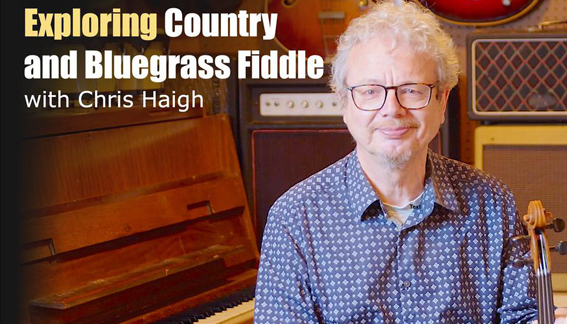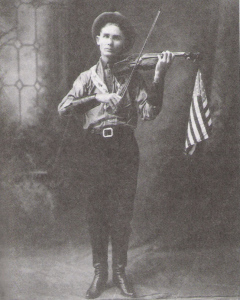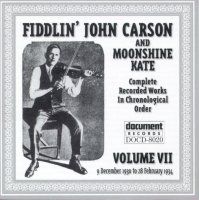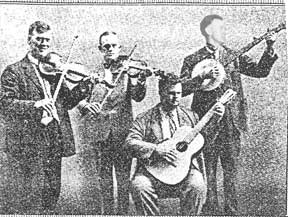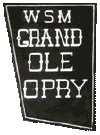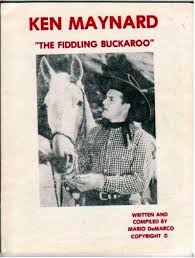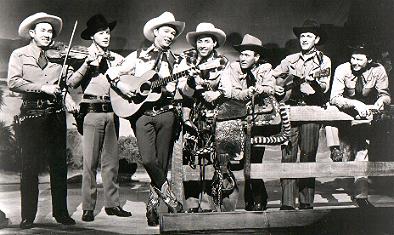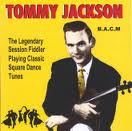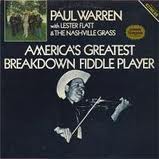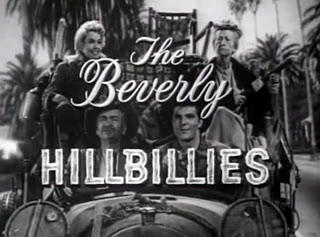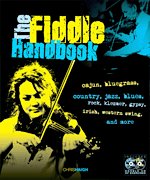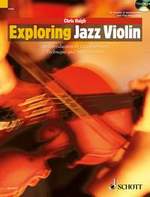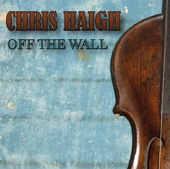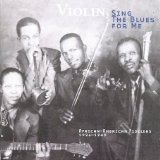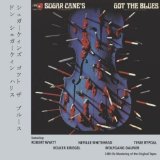
MENU TO FIDDLE STYLES:
Exploring Country and Bluegrass Fiddle (Book and video course)
VISIT THE FIDDLE CHANNEL FOR FREE FIDDLE LESSONS, TUTORIALS, AND WORKSHOPS!
Country Fiddle
LEARN COUNTRY FIDDLE ONTHE FIDDLE CHANNEL!
We’re going to look at the birth of country music back in the 1920’s, and see how the various commercial elements- radio, records, music publishing and live performing affected the music and the lives of the key performers. We’ll trace the two main roots of country music- Appalachian or hillbilly, and western or cowboy music, and look at the role of the Grand Ole Opry and the eventual dominance of Nashville and its studio system, where certain fiddlers became part of a factory production line of country hits. We’ll see how traditional music evolved into western swing and bluegrass, how honky tonk developed in the forties, and how the rise of rockabilly and rock and roll was countered by the growth of ever smoother and blander ‘countrypolitan” music in the 50’s and 60’s, both trends which almost sounded the death knell for country fiddle. Finally we’ll look at how the fiddle has survived and indeed thrived in the massive commercial expansion of county in the last few decades, when artists like Garth Brooks have managed to outsell even the biggest pop stars.
The Birth of Country Fiddle
Country music began on 30th June 1922 when Texas fiddle champion Eck Robertson, along with his friend Henry Gilliland, also a fiddler, marched into the New York offices of the Victor Talking Machine Company, dressed in full Confederate uniforms, demanding an audition. The recording industry was in its infancy, and old time music had never been recorded commercially, but Gilliland had a friend who did some legal work for Victor, and the reception they regularly received at fiddle contests persuaded them that stardom was just around the corner. They were not exactly welcomed with open arms. Eck Robertson:
"You couldn't fool that man was running the shop in the Victor office...But then he come at me, he just come into the room in a hurry with a long piece of paper with names on it. He done that on purpose, you see, thought he'd get rid of me just like he had all the rest of them. He said 'Young man, get your fiddle out and start off on a tune.' Said 'I can tell that quick whether I can use you or not.' Well, I said back to him just as honest as I could 'Mister, I come a long ways to get an audition with you. Maybe I better wait and come back another time. You seem like you're in an awful hurry.' 'No,' he said, 'Just start off a tune...' Well, I didn't get to play half of Sallie Gooden; he just throwed up his hands and stopped me. Said, 'By Ned, that's fine!' And just smiled, you know. Said, 'Come back in the morning at nine o'clock and we'll make a test record.'
Whether Victor realised or not, Eck Robertson was the Real Deal, seen today as a pioneer of the modern Texas contest style of fiddling. He recorded 12 sides at that session, including such classics as Done Gone, Ragtime Annie and Arkansas Traveller. His Sally Gooden is said to be the earliest recording showing use of the “Texas Long Bow”, the smooth, fluid slurring action which in Texas style was to largely replace the older push-pull sawing action of most old time fiddling.
Victor, unfortunately, had little idea about how to market these recordings, and it was a year before the first tracks were released, to a lukewarm reception. Rival company Okeh, on the other hand had their eye on the ball, and had realised that, just as poor blacks represented a strong market for selling “race” records, so the white farmers of the southern states, particularly in the Appalachians, would lap up old time music if it was offered to them. Talent scout Ralph Peer had been dispatched down south to seek out suitable performers of all kinds- black, white, secular and gospel. In 1923 he struck gold when he came across Fiddlin’ John Carson. Carson was not only a fine fiddler (though by no means as influential as Robertson), but more importantly he was also a singer, albeit with a distinctly rough and creaky voice. He was also a showman and natural entertainer. His first two sides, sung to the accompaniment of his own fiddle, were The Little old Log Cabin in the Lane and The Old Hen Cackled and the Rooster’s Going to Crow.
To everyone’s surprise the first 500 copies were sold out within days, and continued to leave the shelves as fast as they could be pressed. Carson became the first country music star, and proved that this was a major market which the record companies would have to take seriously. Almost without exception the bosses of the record companies, radio stations, and even talent scouts like Ralph Peer despised the music coming out of the Appalachians. It was raw, unschooled and filled with crude double entendre. They would much prefer to deal with light classical, popular song, parlour music, or gospel choirs which had a degree of sophistication or respectability about them. Instead they were landed with backwoods yokels like Carson, who insisted that he had to be well oiled with moonshine and have a mouthful of chewing tobacco in order to perform. There was certainly little gentility in one of his later recordings, It’s a Shame to Whip your Wife on Sunday.
Hillbilly music?
One of the first problems to be dealt with was what to call this music. The term most widely used within the industry was “hillbilly”, which came with some powerfully negative connotations, as shown by this definition from Variety magazine in 1926;
“The “hillbilly” is a North Carolina or Tennessee and adjacent mountaineer type of illiterate white….Theirs is a community all to themselves…illiterate and ignorant, with the intelligence of morons.”
Clearly as a marketing term this would leave something to be desired. What was needed was some term which showed respect towards the sense of history, continuity, and old-fashioned values which this music appeared to represent. Among the terms tried out were “old time”, “old fashioned”, “old familiar” and “hill country”. The latter, though never widely used, may be significant in providing a “missing link” with the term “country” which was eventually to become universal.
Soon Victor and Okeh representatives were making regular trips to the south, setting up temporary studios in empty shops or warehouses in regional centres like Atlanta, Georgia. Either through advertising or word of mouth, word would get round to local performers, who then turned up to audition and hopefully make a record, for which they would be paid between ten and twenty five dollars. At first the whole process was very hit-and miss; the artists made little money out of even a hit record, and the record companies had little control over the material being recorded or the subsequent careers of the musicians.
One aspect of the business which was problematic was publishing. In New York there was already a successful and well developed system- professional writers in Tin Pan Alley produced new songs which could then be matched to suitable artists, earning good money for the publishers. With hillbilly music things were not quite so straightforward. Providing a song was “traditional” it could be published by the first company to get their hands on it. The musicians themselves had no control over the process, as the publishers' society ASCAP was barred to performers who could not read music. This led to a frenzied “strip mining” of material, so that within a short time all the best-known songs had already been taken. What was then needed was people who could write new songs which still sounded authentic Polk Brockman was the Okeh representative in Atlanta, and it was he who had recorded Fiddlin’ John Carson. He happened upon a blind newsboy, Andrew Jenkins who, much in the centuries-old tradition of the broadside ballads, was able to compose and perform songs about events in the news. In 1925 Brockman commissioned Jenkins to write a song The Death of Floyd Collins, about a man trapped in a Kentucky cave. The story filled the newspapers, all rescue attempts failed, Collins tragically died, and the song was dynamite. Brockman at first presented the song to John Carson, but the concept of quickly learning and convincingly performing new material was not second nature to the old-timer. He then offered it to Vernon Dalhart, an experienced, classically trained operatic tenor who had no qualms about attempting a fake hillbilly accent. Dalhart had a huge hit with the song, becoming the first real star of country music, with a career largely based around sentimental disaster songs- others included the first million-seller in country music, The Wreck of the Old ‘97, and a song which was still being played in my childhood, The Runaway Train. Dalhart’s success with this song provided two valuable lessons. Firstly, it showed the value of songwriting and publishing even within hillbilly music, which by definition was supposed to be as old as the hills; and secondly it showed that, whilst authenticity was the cornerstone of old time music, it was a cornerstone that could easily be fabricated or manufactured.
Gid Tanner and the Skillet Lickers
Gid Tanner and the Skillet Lickers was one of the first examples of a group of competent musicians put together specifically to make records, and one which furthermore played up the hillbilly image for all it was worth. Gideon Tanner, a fiddling chicken farmer from north Georgia was in 1924 one of the first artists to record for Columbia after Fiddlin’ John Carson’s success. Tanner first recorded with a singer/guitarist George Riley Puckett, then two years later was asked by Columbia to expand the group. They were joined by banjo player Fate Norris, and Clayton McMichen, “The North Georgia Wildcat”, an 18 times national fiddle champion, equally at home in jazz and hillbilly music.
They recorded prolifically, churning out a series of hits, mixing fiddle tunes, songs and comedy skits; there performance gave the impression of being rough and rowdy, but the fiddle parts were actually very carefully arranged. They were full of fun; Ya Gotta Quit Kickin’ my Dog around, for example, is punctuated with the howls of a maligned canine, while A Day at the County Fair has some fine hog calling and award-winning hogs. The band was joined in 1928 by fiddler, Lowe Stokes. Aside from his fiddling, Stokes was something of a walking disaster area; on one occasion he was stabbed, almost in the heart, and on two separate occasions he was shot in the right hand, which was eventually replaced with a hook specially designed to hold his bow.
Fiddle on Country Music Radio
Radio played a vital role in the dissemination and evolution of country music. The first station of any size in the South was WSB (the call letters stood for “Welcome South, Brother”) in Atlanta, which began broadcasting on March 16th 1922. Fiddlin’ John Carson was playing on the station within weeks, even though he had not yet had his first recording session.
Country music on radio was almost entirely live performances. There was nothing more than expenses paid to the musicians, but it was a vital medium for boosting their public profile, and advertising their live performances. Hillbilly music was immediately popular with audiences,, as measured by response from listeners writing in, and for the programme schedulers country fiddlers and singers were invaluable because they could play for as long or as short as they were required, unlike classical musicians who were tied to a fixed, prepared repertoire. WSB soon had two major competitors; WLS (“World’s Largest Store”- the original owners were Sears Roebuck) opened in Chicago in 1924, and WSM (We Shield Millions- the owner being an insurance company), which opened in Nashville in 1925. Whilst WSB scattered its hillbilly music through the schedules, WLS made the shrewd decision to make Saturday night its country night, so that fans of this type of music would know when to tune in to hear what they wanted. The station’s owners were aghast at the “disgraceful low-brow music” being aired, and would have pulled the show had it not been for the overwhelmingly positive response from rural farmers and homesick migrants from the south. The programme grew, and when it achieved national syndication, became known as the National Barn dance. George Hay, a WLS presenter, was lured down to Nashville to launch a similar show for WSM.
The Grand Ole Opry
Hay booked Uncle Jimmy Thompson, a veteran fiddler already in his 77th year, who initially played the two hour Saturday night slot on his own, churning out a seemingly inexhaustible string of breakdowns and hornpipes. With his white beard, his repertoire learned during the civil war and his bluff, hard-drinking persona he fitted the bill perfectly, and Hay could hardly get him to stop at the end of the show. However, though his show was popular, it was clear that solo fiddle was not as entertaining as someone like Fiddlin’ John Carson, who could also sing. It was clear that to maintain an audience they were going to need variety, and soon Thompson was sharing the bill with singers, string bands and other instrumentalists. The show, as at WLS, was referred to as a Barn Dance, but whereas Thompson had played what was authentic barn dance music, the show had soon become more of a country vaudeville performance. Hay established a regular cast of singers and musicians, and, like actors in a play, made sure that everyone had a name, a personality, and a part to play in the show beyond just producing music. Everyone dressed the part; they might turn up at the station dressed in their best Sunday suits, but on the show, even before it started showing to a live studio audience, it was smocks, dungarees and straw hats all round. He named himself ”The Solemn old Judge”, presiding over an informal, hayseed knockabout show which eventually became known as the Grand Ole Opry.
Among the biggest stars of the Opry, almost from the beginning was singer and fiddler Roy Acuff. He had joined the Opry in 1938; prior to his arrival most of the acts had been fiddle bands with occasional or incidental vocals. Acuff was the first to act as a lead singer with backing band, and the crowds loved it. As Acuff himself modestly asserts, “I was the first one that came there with what they call a voice” He was always concerned with the image and entertainment value of his band. When he had established himself as a frontman and singer, rather than a fiddler, he hired ex Bluegrass Boy Tommy Magness, the first fiddler to record Orange Blossom Special, to play fiddle. He used his own instrument largely as a prop -one of his tricks was to balance his fiddle bow on his nose. By 1940 he had become the Opry’s biggest attractions, often dubbed The King of Country Music. Legend has it (and who’s going to disprove it?) that during WW2, Japanese troops used to go into action with the battle cry “To Hell with Roy Acuff!”
Meanwhile, the search continued for new talent to satisfy the insatiable demand for hillbilly music. Ralph Peer, who had signed Carson for Okeh, decided to move over to Victor, a far larger company. At first he was offered a $5,000 salary, which he turned down as he had earned considerably more with his previous employer. Negotiations appeared to be at a stalemate, when Peer suddenly did an about-turn, offering to work for just $1 a year, with the proviso that he be allowed to sign all the artist to his own publishing company. Victor, who had not yet cottoned on to the value of publishing in country music, readily agreed. There must have been some red faces at Victor when they eventually discovered that his publishing earnings in the first three months at Victor came to a cool $250,000. In another shrewd move (and yes, he did continue to become to become disgustingly rich!), instead of fleecing the artists he signed, which would have been all too easy, he gave them a share of the royalties.
This had a dual effect. Firstly, it gave them a strong incentive to keep on laying their golden eggs, and secondly, by publicising the money being made by his writers, he was able to attract new talent. There is no better illustration of this than the session in 1927 which he held at Bristol, on the Tennessee-Virginia border. Having set up his temporary studio, he got an article printed in the local paper, telling how one of his groups, the Stoneman Family, had earned $3600 last year from their record sales. Unsurprisingly aspiring artists flocked down from the mountains to audition; “Groups of singers who had not visited Bristol during their entire lifetime arrived by bus, horse and buggy, trains or on foot.” And among the wide-eyed hopefuls were what would become two of the biggest names in country music, The Carter Family and Jimmie Rodgers.
Jimmie Rodgers
Jimmie Rodgers, in his short career earned the justifiable title of The Father of Country Music. He was the archetypal country star, and perhaps the first to have a distinctive and iconic image which had nothing to do with the hillbilly. He was born in Mississippi, and in his formative years listened to a great deal of blues music. He wanted to become a singer from an early age, but for several years, at his father’s insistence, worked on the railroads as a brakeman. He soon took to rambling, picking up casual work and touring with minstrel shows. He had been singing with a group, the Tenneva Ramblers, when in 1927 they heard about the Bristol auditions. The night before, they had a row and Rodgers ended up auditioning on his own, accompanying himself on guitar. Many things would have made him stand out for Peer; his songwriting ability, his good looks and winning smile, his trademark yodel, and the simple sincerity of his singing. His first recordings were not a success, but his follow-up song, T for Texas (released as Blue Yodel) went on to sell a million copies, making “The Singing Brakeman”, as he became known, into a household name.
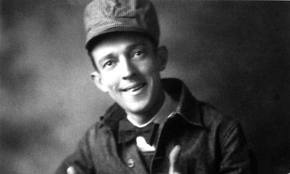
He built his freewheeling, romantic image around his hobo/railroad background, usually pictured wearing either a railroad worker’s cap, or a cowboy hat, and the material of his songs took in the lives of those on the wild side of American life- gamblers, drinkers, cowboys and lost souls. He died young, of tuberculosis, in 1933, but not before he had written and recorded a string of hits. Whilst many of his songs were recorded just with guitar, he sometimes used fiddle, mostly Clayton McMichen (of Skillet Lickers fame); the song Peach Pickin’ Time in Georgia features McMichen playing an intro which mirrors the Rodgers yodel and places it firmly in the Essential Licks checklist of every country fiddler.
Singing Cowboys
If Jimmie Rodgers was among the first country stars to move away from the hillbilly image, he was at the start of a profound trend. Soon America was in thrall to a new character- the Singing Cowboy. Whilst both the Appalachian hillbilly and western cowboy are figures based in reality, they both have an equally strong mythology. From the beginning of the Depression in the early 30’s the reality of the hillbilly, stuck on an isolated farm and facing foreclosure by the bank as commodity prices tumbled, or forced into the cities to look for work, was a bleak one. The image of the cowboy, by contrast, had never looked more appealing and romantic; the solitary rider, untroubled by the complexity and hardship of the modern world, striving heroically against sun, wind and the bad guy to do the right thing in his own way. It was an image ripe for exploitation, both by singers and Hollywood filmmakers. Whilst the musical material inherited from actual cowboys was minute in contrast to that of the sons of the soil in the Appalachians, the clothes and accessories of the cowboy- the Stetson or ten-gallon hat, the boots, the spurs, the guns, not to mention the horse- they practically wrote the songs themselves.
The first of the great singing cowboys, and certainly the only one who could ride a horse, sing, yodel, and play fiddle at the same time, was Ken Maynard. Born in Texas in 1895, he spent his early career as a trick rider with a series of touring wild west shows. A passably singer and an able musician, he played fiddle, guitar, banjo and harmonica. With his rugged good looks he was the ideal candidate when Hollywood needed its first singing cowboy for what was to be a seemingly endless string of Saturday matinee westerns. His first was the 1929 film “In Old Arizona”, and he made many more throughout the 30’s, including “The Fiddling Buckaroo”. He made only a handful of records, songs such as Home on the Range and The Cowboy’s Lament, and in 1934 he shot himself in the foot (not literally), when he invited Gene Autry to sing in his film In Old Santa Fe.
Unlike Maynard, Autry was an excellent singer, more of a Bing Crosby crooner than an honest-to God rattlesnake-biting, tobacco chewing horse wrangler. He also wore a white hat, which guaranteed he would come out on top in any shootout. Autry already had a singing career before he got into films, having signed a record deal with Columbia in 1929, and working on the National Barn Dance show for four years. At first he sand a broad range of material, but when his future as the singing cowboy became clear, songs about moonshine and hogs were out; saddles, goldmines and tumbleweed were in.
To bolster his image as the Good Guy of western movies, Autry wrote a ten- commandment Cowboy Code, opening with 1.The Cowboy must never shoot first, hit a smaller man, or take unfair advantage. I think you get the picture. Possibly Columbia Pictures were not aware of the code. When in 1938 Autry asked for a raise, having already made a fortune for Columbia, the company immediately began searching for a replacement, which they found in the persons of Roy Rogers and his faithful mount, Trigger. Unlike Maynard or Autry (who was raised on a cattle ranch), Rogers had no genuine cowboy pedigree, having been born in Cincinatti and worked in a shoe factory. Nevertheless, with his boyish good looks he soon came to define the cowboy image for generations to come, eventually moving to television, and launching an armada of cowboy-related merchandise (This was Woody from Toy Story, in flesh and blood). He was, also, however, an excellent and experiemced singer, working first with the Rocky Mountaineers, and then with the highly influential Sons Of The Pioneers. This was a group specialising in the romance of the old west- songs of tumbleweeds, campfires, bandits and buckaroos, carefully arranged with the creamiest of harmonies. They also boasted a top dog of a fiddle player in Hugh Farr. Farr was a hugely talented musician, singled out as a fiddler from the outset (his parents performed as a duo, but had five daughters. At Hugh’s birth, when he realised he now had a son, his father exclaimed “Well I’ll be darned, there’s my fiddler!”. By the age of nine Hugh Farr had mastered the fiddle and learned the entire family repertoire of old time material. Not content with this, he would sneak out of bed at night to listen to the radio, singling out jazzy groups like the Kansas City Night Hawks, and had soon picked up a first class swing style. When Roy Rogers began to develop his film career, he left the Sons Of The Pioneers, though they would often accompany him on screen. They say old cowboys never die. Rogers made it to the age of 86; The Sons of The Pioneers are, remarkably, still performing, and at the Roy Rogers Museum, Missouri, crowds still flock to see Trigger, stuffed.
Honky Tonk Music
The dreamy nostalgia of western music wasn’t going to last forever, and the 1940’s ushered in a more raw, down to earth style of country music- honky tonk. The term had already been around since the early 1900’s, referring to a style of piano playing, and it later became the common term for the new breed of roadhouses, bars and juke joints which sprang up after the repeal of abolition in 1933. They were rough and rowdy establishments, often on the outskirts of town, frequented by hard-bitten blue collar workers determined to escape from the trials of life. Because honky tonks were always so noisy, the proprietors and indeed customers wanted music which would cut through the hubbub. The immediate answer to this was provided by Ernest Tubb when for his 1941 recording Walking the Floor over You he brought in Fay “Smitty” Smith on electric guitar- still a novelty in country music but one which gave a new, harder edge to the sound. The song was a huge seller, and as well as setting him up for a long run of hits, it also won him a place on the Grand Old Opry, placing the new honky tonk sound firmly at the heart of country music.
Honky tonk did not entirely overthrow the old guard; the cowboy hats remained; it was still music largely from Texas, though now more urban than rural, and the fiddle still had a vital role, alongside the steel guitar, in anchoring the sound in country rather than mainstream music. Whilst Tubb didn’t use fiddle up till 1944, he used Johnny Sapp for three years, until he moved to Nashville for the Opry; from then on, until the late 50’s his fiddle work went almost entirely to the session men Tommy Jackson and Dale Potter. As we’ll discover, these two would have country music recording sewn up between them for a decade or more.
Hank Williams
The biggest star of honky tonk, and arguable of the whole of country music, was Hank Williams. He was born in 1923 in rural Alabama, He learned fiddle and guitar as a child, and, with a head full of cowboy films, named his first band the Drifting Cowboys. He was writing songs almost as soon as he began singing, and in 1946 he met Fred Rose, of the hugely influential Nashville publishing company Acuff &Rose, who was impressed by Williams’ material and was able to get him signed, first to a minor New York record label, and then to the much larger MGM.
Hank Williams was not an innovator, but he was an incredibly powerful and emotive performer, mesmerizing audience with the intensity and sincerity of his singing. He had a long string of hits, mostly his own compositions, with songs such as Hey Good Lookin’, Your Cheating Heart, Honky Tonk Blues, Cold, Cold Heart and You Win Again. Classics every one. He sang mostly bitter songs about heartache, remorse, personal doubt and marital strife, themes which would be at the core of country music for decades to come.
There was fiddle on most of Hank Williams’ recordings. For the first few years he used Nashville sidemen Dale Potter or Tommy Jackson, and occasionally ex-Bluegrass boy Chubby Wise. In 1949 he decided to establish a permanent backing band, and auditioned Jerry Rivers. Still proud of his own fiddle playing, Hank Williams opened the audition by taking Rivers’ fiddle and playing a spirited version of Sally Goodin, before challenging him to “beat that!” Jerry was able to do so, and won the grudging comment “Well, anyone that can play Sally Goodin better’n me is a darn good fiddle player. You’re hired!” Rivers played on all the subsequent hits, using, at the encouragement of producer Fred Rose a double stop style which Williams referred to as “garden seed” fiddle. Hank Williams died a premature death from a mixture of heart problems, drink and drugs in 1953; his current chart hit that day was I’ll never Get out of this World Alive.
Other honky tonk pioneers were Ray Price, who incorporated the walking bass and rock-steady drum patterns of western swing to create the “honky tonk shuffle” or “Ray Price Beat”. His fist big hit was Crazy Arms, in 1956, featuring a powerful fiddle intro from Tommy Jackson. Hank Snow had one of the longest careers as a honky tonk singer, lasting from the 30’s to the 80’s; Chubby Wise, who had been with Bill Monroe during the classic years of early bluegrass, toured extensively with Snow. For most of its history country music was mostly a male preserve, but in 1952 Kitty Wells put and end to that when she released It wasn’t God who made Honky Tonk Angels, a song that told the broken hearts tale from the woman’s point of view. It was a huge hit, and opened the way for subsequent female country artists. The song featured bluegrass fiddler Paul Warren, playing a classic country solo; restrained and smooth, artfully elaborating on the melody of the chorus with grace notes and double stops.
Honky Tonk was a style which to some extent brought together two sometimes disparate roots- country (the hillbilly music of the Appalachians, championed in the early Opry), and western- the cowboy music of Texas, western swing and the Hollywood westerns. Fiddle and pedal steel supplied the distinctive element which differentiated it from the pop music of the day, but the electric guitar and eventually drums gave it a hard, modern sound. Add to that a singer with a southern twang and a Stetson, and you have a winning formula which still forms the basis of country music today. However, the mid 50’s brought a challenge which was to shake country music to its core. To understand country music’s response to that, we first need to see what’s been happening back in Nashville.
The Rise of Nashville
Since the early 30’s, the Grand Old Opry in Nashville had been expanding and consolidating, acquiring big name sponsorship, gaining national syndication, and attracting the biggest country stars. In the early 40’s it acquired a new home, the 2,300 seater Ryman Auditorium, where shows were held before a live audience. Members of the cast at the Opry had to perform regularly, if not weekly, so that Nashville was the natural base for many of country’s top musicians. Performers were not well paid for appearing on the show, but it gave them huge prestige, publicity and a way of promoting their careers.
Opry artists The Vagabonds, a slick harmony singing group had formed a company to sell first their own song books on the show, and later those of other artists as well. Though their company did not survive the Depression, it inspired Roy Acuff, along with WSM pianist and aspiring songwriter Fred Rose to form their own publishing company Acuff-Rose, which would eventually become a cornerstone of the country music establishment. Along with publishing there was a need for recording studios, either for recording demos of newly published songs, or for putting out finished product. The first of these in Nashville was Castle Recording Studio, opened in 1946; by 1954 this was getting so much work it needed new premises, and moved to 16th Avenue South, what was soon to become Nashville’s Music Row as all the major record companies established studios and offices there.
Managers, promoters, booking agents and publicists all followed suit, and within a decade Nashville had become the undisputed heart of the country music business. It soon reached a state where there wasn’t a waiter, taxi driver or pizza delivery boy in Nashville who wasn’t also an aspiring singer, musician or songwriter. Artists making records in Nashville tended to use the best musicians from the Opry cast as their backing band. This became the Nashville Studio “A team”, a select group of pickers who could be guaranteed to learn a song and lay down a backing track in less time than it took to walk across the road and eat burger and fries. The first fiddler to hold this enviable position was Tommy Jackson. He started exceptionally young; he was touring with Kitty Wells at the age of 12 (well, it’s better than going down a coal mine), and appearing at the Opry when he was 17, as part of Red Foley’s band the Cumberland Valley Boys. He was responsible for the fiddle parts on many of Hank Williams classic tracks, including Lovesick Blues and I saw the Light. His double stop technique became known as “walking fiddle”, and he set the standard and style for country fiddle for decades to come. As fiddler Johnny Gimble put it, interviewed by Stacy Phillips, “When I moved to Nashville, Tommy Jackson’s style was what sold on records. You sort of adhered to that”. Jackson played on many of Hank Williams’ early hits, as well as with Ray Price, George Jones and a host of others. He also recorded under his own name; in 1953 he signed to Dot Records, and produced a long-running series of solo fiddle albums of standard breakdown tunes, directed at the resurgence in square dancing which was happening at the time. For many young fiddle players throughout the 50’s and 60’s it was his versions of these tunes that got them started.
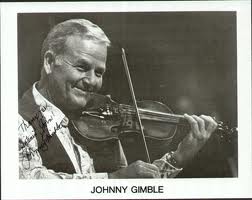
Dale Potter was another fiddler much in demand in Nashville; when twin fiddles were called for, Jackson would take the melody, but Potter, who had the better grasp of harmony, would find the higher or lower line. A great example of Dale Potter’s playing is the solo on Hank Williams’ Mind your own Business, a daring solo with lots of chromatic notes. His own composition, Fiddle Patch is an exuberant improvisation on a blues sequence, packed with double stop fireworks and an eye-watering chromatic run.
Howard Wight Marshall said of Dale Potter
“Potter’s smooth, complicated double- and triple-stops, backup, and fills and breaks are heard in some of Hank Williams’ first recordings…What Potter did was bring double stops and harmony lines to a pinnacle of beauty and finesse that other players consider their model”.
The whole recording process was managed, shaped and controlled by a producer, who would book the studio, engineer, the backing musicians and, if need be an arranger. With the experience of an endless string of artists bringing in their songs to record, the whole process got extremely efficient, but arguably also arguably stale and predictable. There was an element of the factory production line about it; and if Nashville was a machine, the spanner in the works arrived in 1954 in the shape of Elvis Presley.
Rockabilly vs the Nashville Sound
If honky tonk had been a kick in the pants for country music, then rockabilly was a dose of electric shock therapy. It was a rabid mixture of hillbilly, blues and R&B, powered by electric guitar and slapped bass. It was high energy music for a younger generation, delivered with a yelp, a sneer, and a finger to everything that had gone before. Rockabilly had close links with country; one of Elvis Presley’s first recordings was Bill Monroe’s Blue Moon of Kentucky, played first as a waltz, then with a rocking 2/4 beat. Elvis was invited to appear at the Grand Ole Opry in October 1954; he was politely received by the audience, but afterwards one of the organizers, disapproving perhaps of the vulgarity of the performance, suggested that he return to Memphis and stick to truck driving. He vowed never to return.
Rockabilly’s country roots soon disappeared, merging into rock and roll with the use of drums, piano and sax. What was definitely out was the fiddle and the pedal steel guitar, which to the teenage fans represented everything old fashioned and corny about country music. With a huge slice of the audience decamping to rock and roll, Nashville faced a crisis. Rather than ignore the problem and hoping it would go away (as indeed many people believed it would), Nashville producers started to change the direction of their own product, going for a new smoother, more sophisticated and adult sound. With this change they hoped to open up to the mass market, taking it out of the still relatively confined ghetto it had built for itself. The one man more than any other responsible for steering this change was producer, session guitarist and one-time fiddler Chet Atkins. He had started out as a fiddle player for Archie Campbell and Bill Carlisle, eventually becoming known more as a slick and versatile guitarist, later a recording artist in his own right. In 1950 he settled in Nashville, first doing session work, and by 1955 taking charge of RCA’s new studio. Along with other producers like Owen Bradley and Don Law, Atkins created what became known as “Countrypolitan” music, or simply The Nashville Sound. Lush backing vocals, smooth harmonies and “legit” string sections were the order of the day. The chief casualty, along with the pedal steel was the fiddle. Bluegrass guitarist Lester Flatt summed it up when describing the scene in the mid 50’s; ”Back then you couldn’t give a fiddle away. No one liked a fiddle” The instrument had been rejected as old-fashioned both by the younger and older audiences. Artists like Jim Reeves, Ernest Tubb or Patsy Cline, who started out as honky tonkers and had used fiddle extensively in the past, used it less and less.
The decision was made in 1953 (ironically the year of Hank Williams’ death) by the Nashville business elite to drop the “Western” from country & western, and it officially became plain old “country music”.
New Country
One of the laws of physics states that every action has an equal and opposite reaction, and musical taste follows pretty much the same principle. It make take a decade or two, but everything always comes back into fashion eventually. By the mid 70’s rock and roll had split into dozens of sub genres, one of which was country rock. What simpler way to give a rock band a long-haired, back to the country feel than to add a fiddle. Two decades of rock was enough to leave large chunks of the population hankering after something simpler, rootsier and more wholesome. Step forward bluegrass, old time, Cajun and western swing, which may have been hiding in the backwoods, but hqad never actually gone away. And within country music itself there was a reaction to the blandness and uniformity of the Nashville sound, as well as the stranglehold on the business by the major companies based there.
Established singers like Willie Nelson and Waylon Jennings had grown tired of having their careers directed and their records overproduced by suits in Nashville, and decided to take control for themselves. They used their own touring bands to record, instead of using session musicians, and they dubbed themselves the outlaws of country. Austin, Texas became an alternative centre for musicians with a gritty, more progressive and less conservative outlook. Willie Nelson settled there and became a figurehead of the movement. Early on in his career, Nelson had met western swing fiddler Johnny Gimble, who at the time was working with Bob Wills. The two hit it off, with Gimble turning Nelson on to swing music such as that of Django Reinhardt. They began working together in Texas, both live and in the studio; Gimble features particularly strongly on the audacious 1980 Somewhere over the Rainbow album of Hollywood soundtrack songs, while one of his own , most famous compositions Fiddlin’ Around appeared on Nelson’s 1980 Honeysuckle Rose album.
Johnny Gimble
Gimble had already spent ten years (from 1968 to 78) as the first-call session fiddler in Nashville, working for a host of stars including, Charlie Pride, Chet Atkins, Dolly Parton, Conway Twitty, Loretta Lynn, George Strait, Tammy Wynette and Merle Haggard. The latter was one of the pioneers of the Bakersfield Sound, a California-based outpost of country with a hard, rock and roll sensibility. Though by no means in Johnny Gimble’s league as a fiddle player, Charlie Daniels, leader of his own southern rock/country crossover band, left an indelible mark in 1979 with The Devil went Down to Georgia. Decades later, it is still one of the most insistent (and annoying) requests for any country fiddle player.
1986 saw a resurgence of traditional honky-tonk based country music, with a string of debut albums for what would soon become the new country establishment- Steve earl, Randy Travis, Dwight Yoakham and Lyle Lovett. Steve Earle’s next album, Copperhead Row in 1988 included a track with Mark O’Connor, who in his turn had taken over as the top session fiddler in Nashville. On the 1999 album The Mountain, Earle collaborated with the Del McCoury band, adding a traditional bluegrass sound with Jason Carter on fiddle. Dwight Yoakam also features fiddle on many of his albums; Brantley Kearns was on the debut album, Guitars and Cadillacs, while more recently he has used Don Reed.
Jason Carter
Garth Brooks
The country music sensation of the 90’s was, like it or not, Garth Brooks. Dismissed as a “Hat Act”, and widely sneered at by purists who hated to see their music turned into a cross between TV evangelism and stadium rock, nevertheless no one can argue with sales of over 80 million albums. He topped the mainstream charts, outselling the biggest pop stars, and did it moreover with a standard honky tonk line up including pedal steel, and the fiddle of Jimmy Mattingly. Mattingly was a former US Grand masters fiddle champion, and had already worked with Dolly Parton from 1989-93; he toured and recorded with Brooks from 1996. Following Brook’ retirement in 2001, he has been working with the award-winning bluegrass band, the Grascals.
THE BEVERLY HILLBILLIES
Most people remember the Beverly Hillbillies as being a 1960’s TV series, with banjo-driven soundtrack from Flatt and Scruggs, in which Jed Clampett and his family strike it rich when oil (black gold, Texas Tea!) is discovered on their farm in the Ozarks. They move to the Beverly Hills determined to maintain their backwoods lifestyle, with hilarious (sigh) results.
However, the story of the original Beverly Hillbillies is considerably more wacky and unbelievable. In 1930 Glen Rice was manager of a struggling Los Angeles radio station, KMPC. He decided that country music might be one way of increasing his ratings, and cooked up a publicity stunt to introduce it to the station. He announced to his listeners that he was taking a week’s holiday walking in the Santa Monica hills, but after a week he failed to return. Worried rumours spread on-air about his whereabouts, until a further week later he reappeared, telling a fantastic tale. He had discovered, deep in the Beverly Hills, a lost community of hillbillies who had travelled to California from the Ozarks a century ago, since when they had been entirely cut off from modern America. Among them were many highly talented musicians some of whom, it was hoped, might be persuaded to appear on the station. On April 6th 1930, expectant listeners were thrilled to hear Rice announce.. ”As a matter of fact I think they are coming up Wilshire Boulevard right now. Yes, yes, I see them getting off their mules, and there they are. Ladies and Gentlemen, may I present the Hillbillies!”
An excited and gullible audience lapped it up. The hillbillies, who were indeed fine musicians, performed nightly on the show, eventually staying with the station for two years. What Rice did not share with his adoring public was that the hillbillies were in fact experienced professional musicians from Los Angeles who had agreed to dress up, adopt false names, and play along with the gag. Among the stars of the show were such unlikely names as Hank Skillet, Jad Scroggins and Ezra Longnecker. Multi-instrumentalist and fiddler Zeke Manners (originally Leo Mannes) was one of the key musicians; he went on to have a long and successful career as a songwriter and DJ. When the long-running TV sitcom “The Beverly Hillbillies” opened in the 60’s, Manners took the producers to court for use of the band name. Rather than pay up or give up, they agreed in the end to give Manners a job as consultant and co-producer.
Return to fiddlingaround.co.uk homepage
Violin, Sing the Blues for Me: African-American Fiddlers 1926-1949
We are fortunate indeed that the recording industry had already got into gear before the virtual disappearance of violin blues in the early 20thC. This collection gives a remarkable insight into a lost world of black American string bands with 24 songs from artists from the relatively well-known (Lonnie Johnson, Memphis Jug Band, Mississippi Sheiks), to those which were certainly unknown to me (Kansas City Blues Strummers, Henry Simms). Most date from around 1930. though recording dates range from 1926 to 1949. One of the best things about this package is the 32-page booklet, giving general background to the violin blues, and specific information about each act.
No one would ever accuse Sugar Cane Harris of being smooth and polished in his playing. Compared to contemporaries from the 70’s American jazz/rock/fusion scene such as Jerry Goodman or Jean-Luc Ponty, his playing is rough and unsophisticated. Yet Sugar Cane is the genuine article; a blues/rock violinist whos playing is untroubled by classical veneer and technique. He plays as if he had learned the blues sitting at his Gradpappy’s knee, as he probably did. He is best known for his work with Frank Zappa, but in that bizarre hybrid setting it is difficult to assess what one is really hearing from Sugar Cane. On this cd, a live recording from the 1971 Berlin Jazz Festival, we get a much better idea of what he’s all about. Backed by guitar, piano, bass, and the great Robert Wyatt on drums, he gives us four extended numbers. MORE...
